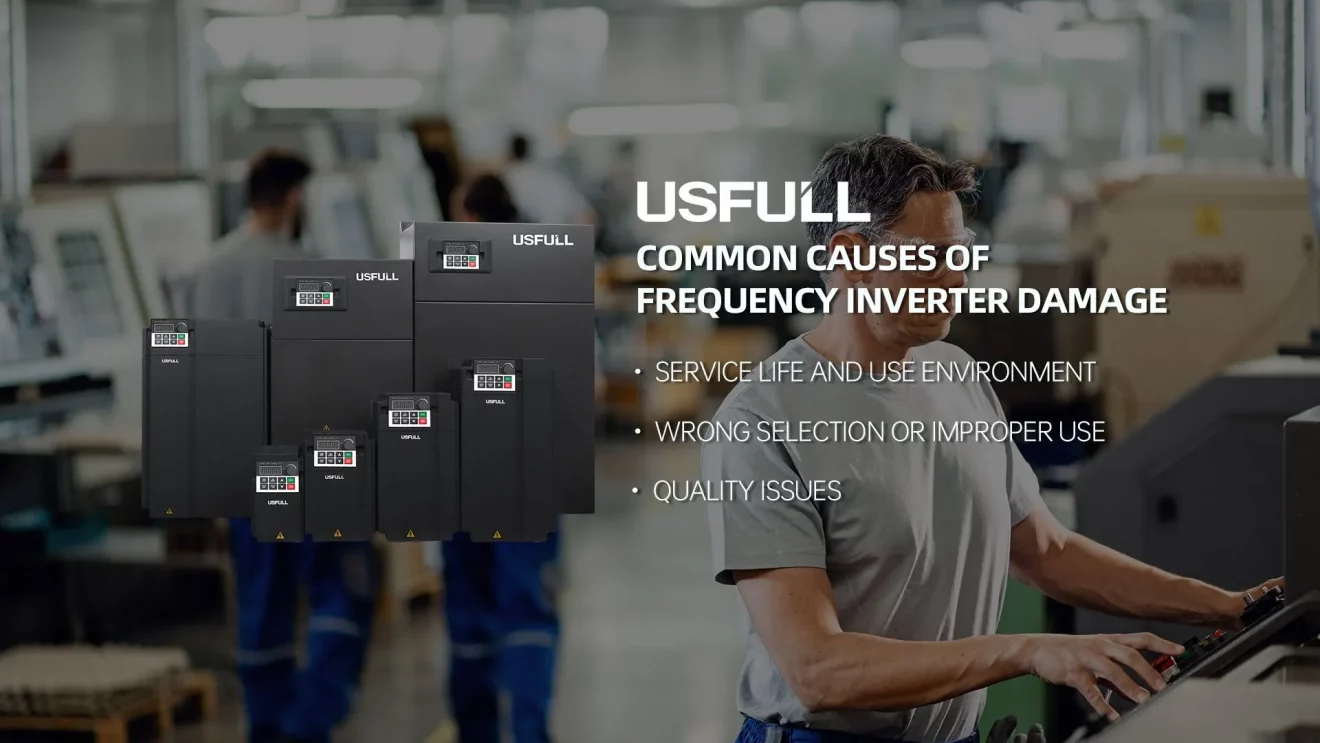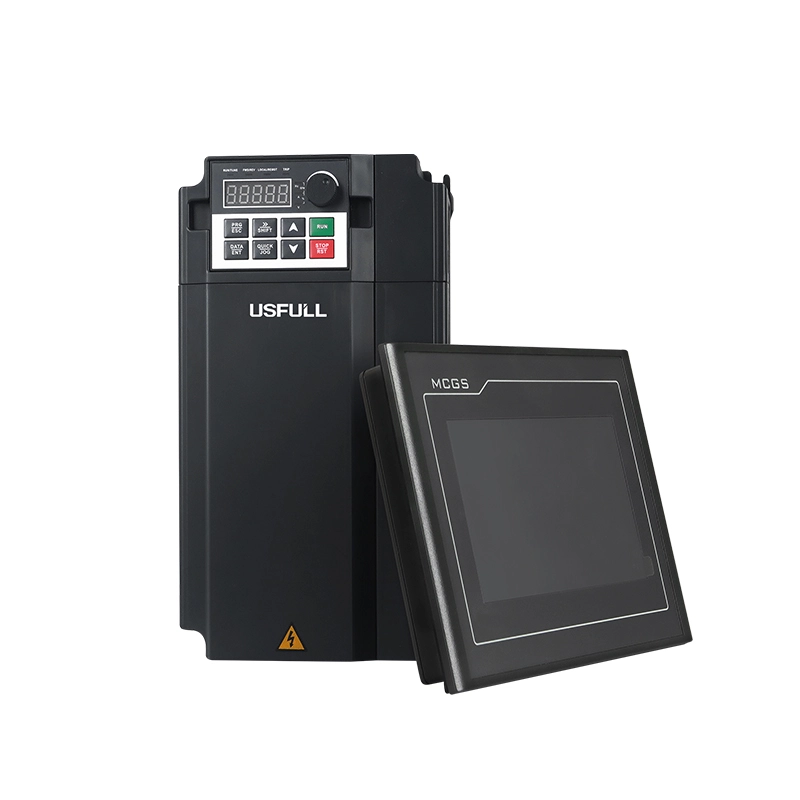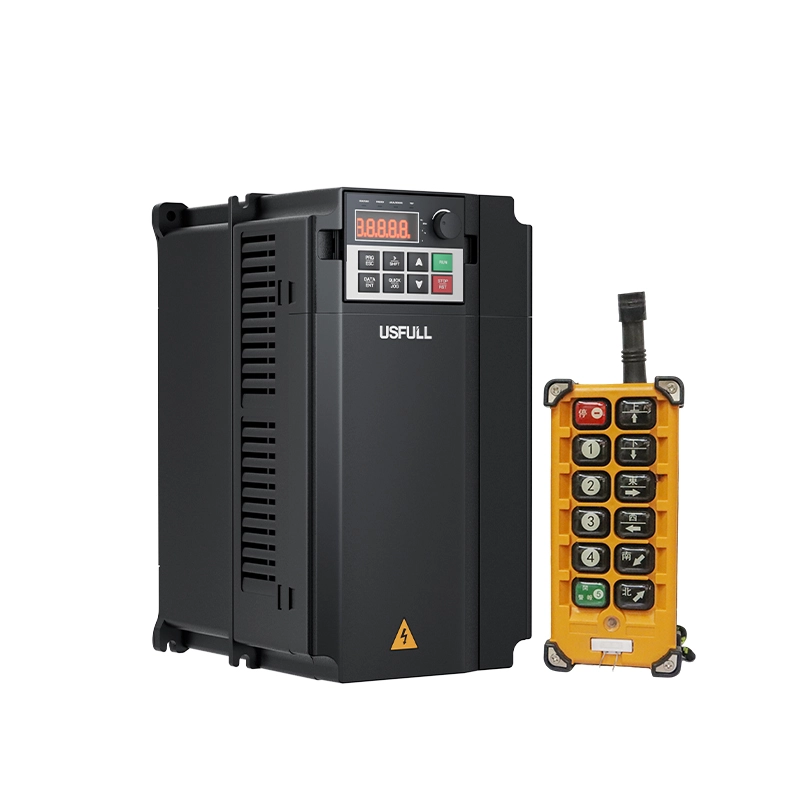Frequency inverters, also known as variable frequency drives (VFDs),play a critical role in controlling motor speed and ensuring energy efficiency. However, these devices can experience damage over time due to various factors. Understanding these causes is essential for proper maintenance and prolonged service life.
Common Causes of Frequency Inverter Damage
The most frequent issues leading to inverter damage include overvoltage, overload, overcurrent, and overheating. These problems often stem from environmental and operational conditions, such as high input voltage, excessive ambient temperature, heavy loads, dust, and moisture.
Since a frequency inverter is an electronic device composed of numerous components, any single malfunctioning component can disrupt its operation. Additionally, like all electronic products, frequency inverters have a finite lifespan. Aging components, akin to human aging, can lead to reduced efficiency or complete failure over time.
Frequency Inverter Service Life and Operating Environment
The lifespan of a frequency inverter depends on its quality, environment, and maintenance. For electronic devices, the theoretical service life is typically around 3–15 years. While home appliances like TVs or refrigerators may be discarded sooner due to functional obsolescence, industrial electronic devices, such as inverter VFDs, are often more durable.
In optimal conditions, some industrial variable speed drives last over 10 years, with premium brands exceeding 20 years if critical components like bus capacitors are periodically replaced. However, in challenging environments, such as chemical plants or facilities with high dust and humidity, damage can occur within months if proper protections are not in place.
For instance:
- Corrosive gases and dustcan degrade circuit boards and solder joints.
- High humidity and heatcan cause insulation breakdown and short circuits.
- Excessive vibration, common in press machines, can loosen connections and create solder fatigue.
To enhance durability, frequency inverters should be installed in ventilated enclosures, preferably with cooling systems like air conditioning or fans.
Incorrect Frequency Inverter Selection or Improper Use
Using an inappropriate variable frequency inverter for an application or misusing the device can significantly shorten its lifespan. Each motor and load type requires a properly matched inverter. For example:
- Special-purpose inverters (e.g., elevator or spindle inverters) are better suited for specific applications compared to general-purpose models.
- High-frequency starting and stopping can cause overheating; increasing the inverter’s capacity or adding braking units and resistors can mitigate this.
- Operating in low-frequency ranges for extended periods can stress the device; increasing the speed ratio helps distribute the workload more evenly.
- Regions with frequent lightning or voltage fluctuations should employ surge protectors, reactors, and filters to safeguard the device.
The Quality Problem of the Frequency Inverter Itself
The quality of the frequency inverter plays a crucial role in its longevity and reliability. Reputable brands, such as USFULL, stand out for their robust quality management systems and advanced manufacturing techniques. High-quality components, including durable capacitors and high-voltage-resistant modules, make these inverters less prone to failure.
Conversely, lower-quality devices often lack rigorous design and testing, resulting in higher failure rates. Poor PCB layouts, suboptimal component selection, or inadequate software design can lead to internal malfunctions even in stable environments.
Conclusion
To prevent frequency inverter damage, it’s vital to choose the right product for the application, maintain an optimal operating environment, and prioritize high-quality devices. Regular inspections and proper maintenance can further extend the lifespan of your variable frequency drive. By addressing these factors, businesses can reduce downtime, lower repair costs, and ensure the reliable operation of their inverter VFDs.





